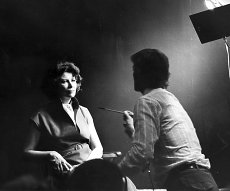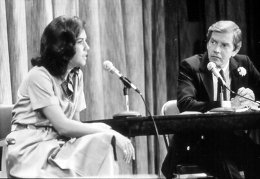|
The National
Portrait Seminar
Plays Its Part In the Story
The first national conference for
portrait artists was The National
Portrait Seminar, presented by The
Portrait Institute in New York City,
1979-1982, Washington DC in 1983,
Chicago in 1984, and Atlanta in
1990 and 1993. The faculty leaders
at all of these meetings were Robert
Bruce Williams, Gordon Wetmore,
Margaret Holland Sargent, Patricia
Hill Burnett and John Howard Sanden.
It was at these national conferences
that Williams' leadership and example
attracted national attention.

The National Portrait Seminar panel,
1979, from left: Robert Bruce Williams,
Gordon Wetmore, and Margaret Holland
Sargent.

Robert Bruce Williams
painting Meg Sargent,
New York, 1979.

Suzanne McKinney being interviewed
by the Seminar chairman, John Howard
Sanden.
|